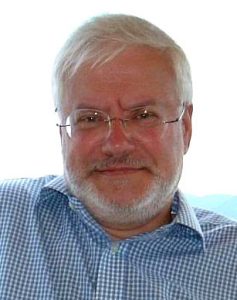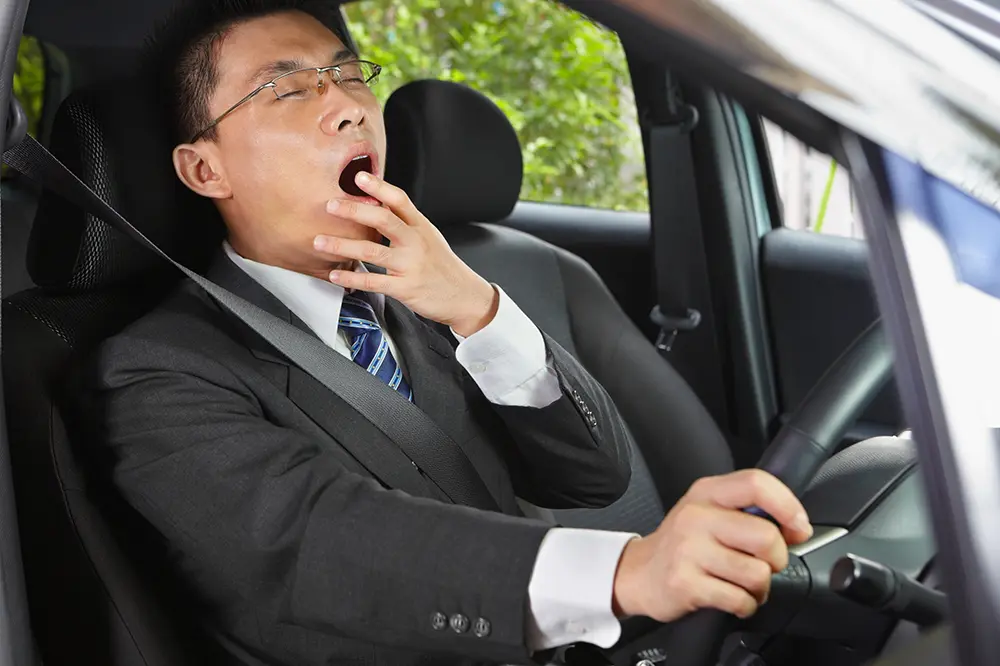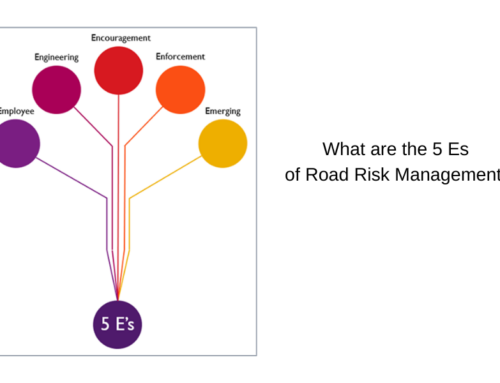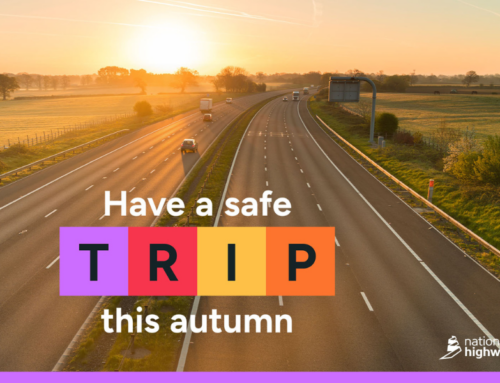The statistics around Obstructive Sleep Apnoea (OSA) – the condition where the walls of the throat relax and narrow during sleep, interrupting breathing and disturbing sleep, potentially triggering severe daytime sleepiness – make alarming reading.
The OSA Partnership Group, a group of organisations with an interest in this common condition, recently reported that it is a serious and growing problem in the UK, particularly against a backdrop of rising obesity, which is one of the risk factors provoking OSA.
Recent research shows that the global adult prevalence of OSA is around one billion people – roughly 20 per cent of the adult population have some degree of OSA.
Studies have shown that when a driver with untreated OSA and excessive sleepiness gets behind the wheel of a vehicle, they are between three and nine times more likely to have an accident and that the accident is likely to be of increased severity.
Alarmingly, sleepiness or tiredness is believed to be responsible for roughly 20 per cent of all motorway accidents, and much of this will be due to OSA; and it’s a particular problem for those who drive professionally, and who spend much of their lives on long-distance journeys.
In Britain, reports the OSA Partnership Group, at least five per cent of the adult population is thought to have undiagnosed sleep apnoea, of which about a quarter has the more severe form of the condition, Obstructive Sleep Apnoea Syndrome.
In the case of vocational drivers, the figure with undiagnosed OSA is believed to be far higher – possibly up to 15 per cent.
It’s particularly worrying, then, that the Partnership has uncovered a worrying decline among fleet operators who feel that their company has a responsibility to ensure that their drivers have access to treatment.
The Partnership’s research in 2016 showed that 90 per cent felt they had a responsibility, but this dropped to 85 per cent in 2017. It means that more than 15 per cent of businesses – around 85,000 of the total 5.7 million in the UK – feel that they do not have a responsibility to ensure that their commercial drivers have access to diagnosis and treatment.
Fortunately, however, efforts are being made to reverse this, led by the Partnership.
One of the key barriers to dealing with OSA in the driving workforce is employees’ fear that – even if they believe they are suffering from the condition – admitting it would amount to professional suicide, an understandable concern.
They fear that if they raise the issue with their manager, it could trigger a chain of events in which they lose their licence – and their livelihood – as they progress slowly through bureaucratic company procedures and, potentially, a lumberingly slow health service.
This is why the Partnership is campaigning on two fronts. On the first, it is fighting to raise awareness among employers, urging them to implement fully supportive OSA policies that would not only make their employees’ lives easier, but safeguard their reputation and road risk in general.
On a second front it is campaigning for NICE – the National Institute for Clinical Excellence, which issues guidance to medical services – to develop guidelines for the management of OSA, especially when affecting commercial drivers. It had previously persuaded NICE to introduce new wording in a ‘Clinical Knowledge Summary’ for GPs treating OSA patients, which encourages GPs to ensure rapid treatment for professional drivers, as part of a hoped-for national four-week fast-track programme.
Following lobbying by the Partnership, NICE is now working on this and will publish new guidelines in 2020. With backing from NHS England, respiratory and sleep groups, including the British Thoracic Society and a number of sleep clinics, the Partnership is hopeful that what it calls its ‘Four Week Wait’ campaign will be implemented.
In the meantime, says Professor John Stradling, Emeritus Professor of Respiratory Medicine at Oxford University, it is vitally important that transport companies put their own, supportive, fast-track policies in place – and pay for private treatment of affected drivers, if necessary

Emeritus Professor John Stradling of Oxford University
He says that with the right policies, there is no reason why every OSA sufferer should not be successfully treated, and be back in the driving seat within around four weeks.
“The first thing a company should do is raise awareness, saying that they are very sympathetic to this problem, because they know it affects drivers’ lives,” says Professor Stradling, who was one of the very first to work in this area, after initially becoming aware of a patient with this then little-known disease while working as a junior doctor at Hammersmith Hospital, in 1978. “And from a selfish point of view it also affects a company’s business, an accident is incredibly expensive.
“What they should do is have a very open door and supportive environment that allows drivers to come forward with symptoms if they are worried, but not under any circumstances be penalised for putting their head above the parapet. This is so important; we have been touring various companies and talking to managers and drivers, and they all basically say ‘we would be scared witless to admit that we might have a problem that affects our driving’.’”
Professor Stradling admits that the process, when drivers do come forward, can be ‘very random’. Uninformed companies can panic and tell the driver to inform the DVLA, leading to unnecessary loss of licence. Enlightened companies take a different approach, he says. If there is excessive sleepiness sufficient to impair driving, then clearly driving should cease, followed by rapid diagnosis and treatment. Where they judge there is no significant sleepiness, the employee can continue driving and be referred to their GP for an assessment of whether further investigation and treatment are necessary.
In the more severe cases – where perhaps the driver is aware that the sleepiness is adversely affecting their driving – an enlightened company will put the employee on sick leave, or non-driving duties, while they provide assistance in seeking medical help.
“The driver will still need to see their GP and if it looks like this is all going to take too long it would be well worth the company dealing with it privately,” says Professor Stradling. “Because the cost of dealing with it privately is vastly less than trying to find a locum driver to take the place of the guy off the road. It’s an economic decision each company has to make.”
Adds Professor Stradling: “If the manager does not know what sleep apnoea is all about, he may say ‘You’d better stop driving and inform the DVLA’. But this is a disastrous approach, because the driver will then talk to his mates and they’ll say ‘I have the same symptoms and if that’s what happened to you, I’m not coming forward’. It is in a company’s best interests to be sympathetic.”
Unfortunately, admits Professor Stradling, even employees working for firms which have given a written guarantee that they will help, rather than penalise, can sometimes be too scared to come forward. “It is a hard nut to crack and I am not blaming lorry drivers at all, the vast majority of whom are highly responsible and professional. Even if they do all the right things they can be crucified by bad bureaucracy.”
On the positive side, treatment is relatively straightforward and effective. Drivers reporting to their GP with symptoms will, generally, be referred to a sleep clinic, which will conduct tests which will include observing them while they sleep, to ascertain the severity of their condition. Most major cities have their own sleep centres who do their best to help commercial drivers.
If deemed to be at risk, it is likely that a driver will be recommended to try Continuous Positive Airway Pressure therapy. This involves wearing a mask that covers the nose, or nose and mouth, while sleeping. Connected by a tube to an electric pump, it gently pressurises the upper airway to hold it open. “At the moment it is the simplest, least unpleasant treatment,” says Professor Stradling. “The snoring goes away, the obstruction goes away, sleep returns to normal and the excessive sleepiness disappears.”
Often, sufferers can be deterred by the prospect of using the device, says Professor Stradling, who admits to snoring but says he does not suffer, personally, from OSA: “It sounds bizarre, and it is a little bizarre, but the fact that 11,000 people under the care of the Oxford sleep unit alone are using this, shows that it is entirely useable and it is a small price to pay for the resolution of their symptoms. The treatment is provided free by the NHS and costs around £220 for the pump and £75 for the mask. The mask lasts about a year and the machine lasts about seven years, so it really is peanuts in terms of costs to the NHS.”
For now however, says Prof Stradling, all efforts must be focused on ensuring that drivers can access this treatment speedily, without fear of penalty – and before they have an accident.
“This starts with getting the message out to transport managers and fleets: it’s in your best interests in every possible way, to get help to drivers to sort this out as quickly, and as efficiently, as possible.”
How do you know if you are suffering from OSA?
The key indicator of sleep apnoea is what Professor Stradling calls a ‘longish’ history of heavy snoring. But there is a catch.
“You yourself may not be aware of it and I think this is one of the reasons the condition does not get diagnosed as often as it should,” says Professor Stradling. “It’s because the patient goes to sleep, thinks they sleep perfectly well, wakes up in the morning and are still very sleepy and cannot understand why.
“This is because they are not aware of what is actually going on; it’s usually their partner who is more aware. Their partner will probably have spotted that their snoring is no longer regular but is intermittent, and there are pauses followed by explosive snoring. This represents the apnoeas, the stopping breathing episodes, followed by the sudden re-starting of the breathing. There might be restlessness, so that every time you wake up you may move, and so sometimes people are aware that they are constantly tossing and turning all night. But if the partner does not tell them, they simply might not know.”
During the day however, sufferers will have excessive sleepiness, and even that might not be fully evident until they switch from being fully engaged and occupied in a task – during which they function well – to a situation with less stimulation such as a long boring motorway drive. Only then might they find they begin fighting off sleep.
Unfortunately, says Professor Stradling, there is no objective test capable of predicting whether a sufferer will have an accident. “That’s pretty much true of almost every medical condition that might lead to accidents. All one is doing is working on probabilities and the DVLA have to come to a judgement where they say ‘we think the risk is too high, we have to stop people driving’.”
Professor Stradling says that currently, deciding who is a risk, and who isn’t, can be ‘pretty arbitrary’, especially if the DVLA is phoned. “We recommend always writing to the DVLA”.
One problem is that not everybody with sleep apnoea is symptomatic. “This is why just monitoring people at night does not tell you whether they are going to have an accident or not,” says Professor Stradling. “That’s why in this country we have shied away from overnight monitoring but there are now companies in America, trucking companies, which insist that before you drive for them you have a sleep study. It’s very unfair in my view because a lot of people have a degree of sleep apnoea which causes them no problems whatsoever, so to be forced to use a treatment they don’t need is ridiculous.
“The problem we have battled with, with the DVLA in the UK, up until recently, is that they felt that sleep studies and the result you got from a sleep study was what they should be using to judge licensing issues. They now understand that this is not true, which is why the DVLA guidelines to doctors say that if a patient has sleepiness, sufficient or likely to impair driving, then you should stop driving. I think they have finally understood that it depends on symptoms. Those symptoms are going to be self-reported largely; everybody knows when they are getting sleepy.”
Can drivers tell if they are going to fall asleep at the wheel?
This is a controversial area as, according to Professor Stradling: “The idea that you can fall asleep at the wheel and not know that you are excessively sleepy is probably completely untrue.”
Confusion arises because a sufferer – after an accident – may genuinely not remember the moments leading up to a crash, during which they would in fact have experienced feeling sleepy.
Professor Stradling cites Professor Jim Horne, Emeritus Professor of Psychophysiology at Loughborough University, who has shown that people are aware that they are sleepy before they actually fall asleep.
“It just does not happen out of the blue,” says Professor Stradling. “Unfortunately, there have been a few legal cases where people have got off charges of falling asleep and having an accident and killing somebody because they argued that they did not know they were sleepy. And I’m afraid I don’t believe that to be true. The idea that you can fall asleep at the wheel, and not know that you are sleepy, is probably completely untrue.”
How many accidents are caused by OSA?
This is – despite the wealth of figures purporting to quantify the scale of the problem – a contentious area, says Professor Stradling.
“I just don’t think we know. I, personally, as a clinician have been involved with many patients who’ve been involved in accidents due to sleep apnoea and I’m just one of hundreds of physicians who have dealt with sleep apnoea.
“There are many highlighted cases in the news, but what we do know is that probably one in five of all accidents relates to inattention, fatigue, sleepiness, or whatever you choose to call it.”
Adds Professor Stradling: “But not all of those of course are going to be sleep apnoea; some will just be people behaving badly, maybe someone had three kids all under five who kept them awake all night and so on.
“We also know that if you did fall asleep and had an accident, you probably would not admit it when the police turn up, because you know you would be at fault. Most people say ‘Oh something ran across the road and I had to avoid it’ or ‘I don’t know what happened at all, I must have banged my head’ … and that lets you off the hook, that’s what happens unfortunately.”
Professor Stradling says that the police do have various criteria for assuming that lack of attention or falling asleep caused an accident. These include an absence of skid marks (which imply that the driver did not take avoiding action), weather conditions that were not adverse, and the absence of any third party when a driver runs off the road or into a tree.
“If you hear of a lorry that jack-knifed in the middle of the night across the motorway, that was almost inevitably falling asleep, because lorries do not jack-knife of their own accord. What happens is you nod off, then you suddenly wake up, realise you are veering off the road and you make a rapid correction whilst braking, and then the back of your truck swings around. So that kind of jack knifing is probably due to nodding off.”
Are van and car drivers affected too?
Yes, says Professor Stradling, but van drivers tend to have more stops and make fewer longer journeys than truck drivers, who face travelling for hours on the same – often tedious – road. “Opportunities for van drivers to get bored and nod off are far less than for long distances on motorways.”
What is being done to tackle this problem?
“We are trying very hard to get the government to fast track commercial drivers and people who rely on driving for their living, as part of our call for reassurance that you will get sorted out quickly,” says Professor Stradling.
“It’s one of the key things that the Partnership is trying to organise; if you as a lorry driver present to your GP, you should be guaranteed that you will be sorted out within four weeks. We have similar kinds of guidance for people presenting with possible cancer, with the two-week wait before you are seen. We want a four-week wait to treatment for OSA because treatment is quick and easy and can be organised. Several sleep units, including the Newcastle Sleep Unit, have shown that with very minor alterations in the way you manage your sleep service, you can have a four-week turnaround from presentation to back on the road.”
Concludes Professor Stradling: “We are hopeful that in NICE’s new guidelines there will be a statement that this should happen, because these NICE guidelines are almost mandatory. If the Four Week Wait idea gets into these new guidelines then it may be that, at long last, lorry drivers can trust that the Health Service will sort them out – and that they will not lose their job and livelihood.”
Click here for guides on managing drivers including RoSPA’s ‘Fitness to Drive’
Emeritus Professor John Stradling was talking to David Williams, award-winning transport and road-safety journalist, who writes for national publications including the Evening Standard, the Sunday Telegraph and Daily Telegraph.





